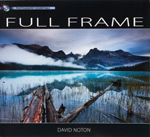Photo Insight – David Noton
As the world?s largest salt flat, Bolivia?s Salar de Uyuni offers a fascinating landscape, but one that?s challenging to photograph. David Noton reveals how he created this stunning shot

One of the foremost travel and landscape photographers working today, David Noton tirelessly travels the world in search of new challenges, which he shares with you here
It?s always important to keep evolving as a photographer, and one of the ways you keep moving forward is by shooting in new locations. Tackling new environments takes you out of your comfort zone and stretches your abilities. My recent trip to Bolivia was a real adventure and I found that photographing there presented me with all kinds of interesting challenges.
One of the places I really wanted to photograph was the Salar de Uyuni in the Bolivian Altiplano (Spanish for ?high plane?) in the south-west of the country. It?s the world?s largest salt flat, covering more than 4,000 square miles and it?s an extraordinary and ethereal landscape. I?ve never seen anything quite like it.
The high altitude (around 4,000m above sea level) means that the air is extremely clear and the light is superb. When you?re standing in the middle of the salt flat, all you can see is this flat white surface stretching far into the distance, with mountains and the ominous-looking Tunupa volcano on the horizon.
When approaching this subject, my first major challenge was dealing with the sheer logistics of getting there. You can, of course, get to the location on an organised tourist trip. However, these trips aren?t generally organised with a photographer?s needs in mind. In any case, the location is so remote that a tour is very unlikely to get you there at the right time of day for photography ? that is, the beginning or end of the day. So in order to get to the salt flat at the time I wanted, I hired a driver, an interpreter and a four-wheel drive vehicle.
On the day, our lengthy journey was delayed by the vehicle having three flat tyres, and by the time we arrived at the location the light was already beginning to fade. However, I wanted to make the best of this rare opportunity to shoot in such a strange landscape, so I had to work quickly.

As I got my bearings on the salt flat, I began to wonder how I would photograph it. Where should I start? The landscape offered no foreground interest and there were no geographical features, trees or vegetation to use in the composition. I experimented with various lenses on my Canon EOS-1Ds Mark III, but decided the one that worked best was my 15mm fisheye lens.
Often, I find the distortion caused by a lens of that focal length is an unattractive feature, but in this case it worked well. It curved the horizon and created a very different scene to the one I actually saw. I found that instead of trying to work around the scene?s minimalism, I could make a feature of it.
One advantage of working in an open, level landscape is that you keep the sunlight right until the end of the day. On the salt flat, this side-lighting was emphasising texture detail and highlighting the tiny ridges that cover the surface. The 15mm lens brought the near foreground into the frame and allowed me to use these features as an important part of the overall landscape.
I also chose to place the peak of the distant Tunupa volcano in the vertical centre of the image. Using a feature like that in the centre is something I usually avoid when composing a scene, but in this case I thought the symmetry worked well.
I wanted to get detail in both the sky and the salt flat surface, but of course couldn?t use a graduated filter on the 15mm lens. Instead, I shot two images ? one exposed for the landscape and the other for the sky ? and blended them together at the post-capture stage in Adobe Photoshop. The resulting image looks almost as if it were taken on another planet and captures the ethereal beauty of this unique location.
 David Noton?s new book Full Frame is now available. It follows David?s journey to ten different locations around the world and gives invaluable insight into his approach and working methods. For more details, visit www.davidnoton.com
David Noton?s new book Full Frame is now available. It follows David?s journey to ten different locations around the world and gives invaluable insight into his approach and working methods. For more details, visit www.davidnoton.com
David Noton was talking to David Clark



